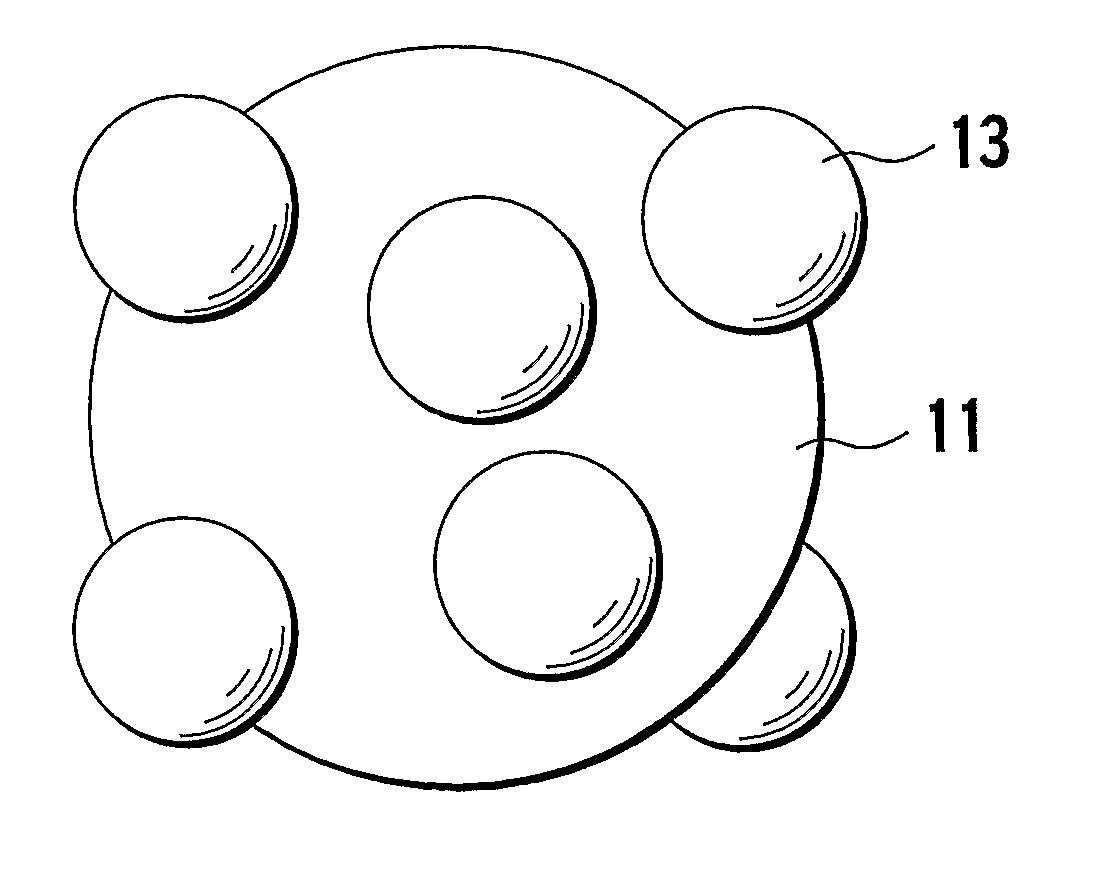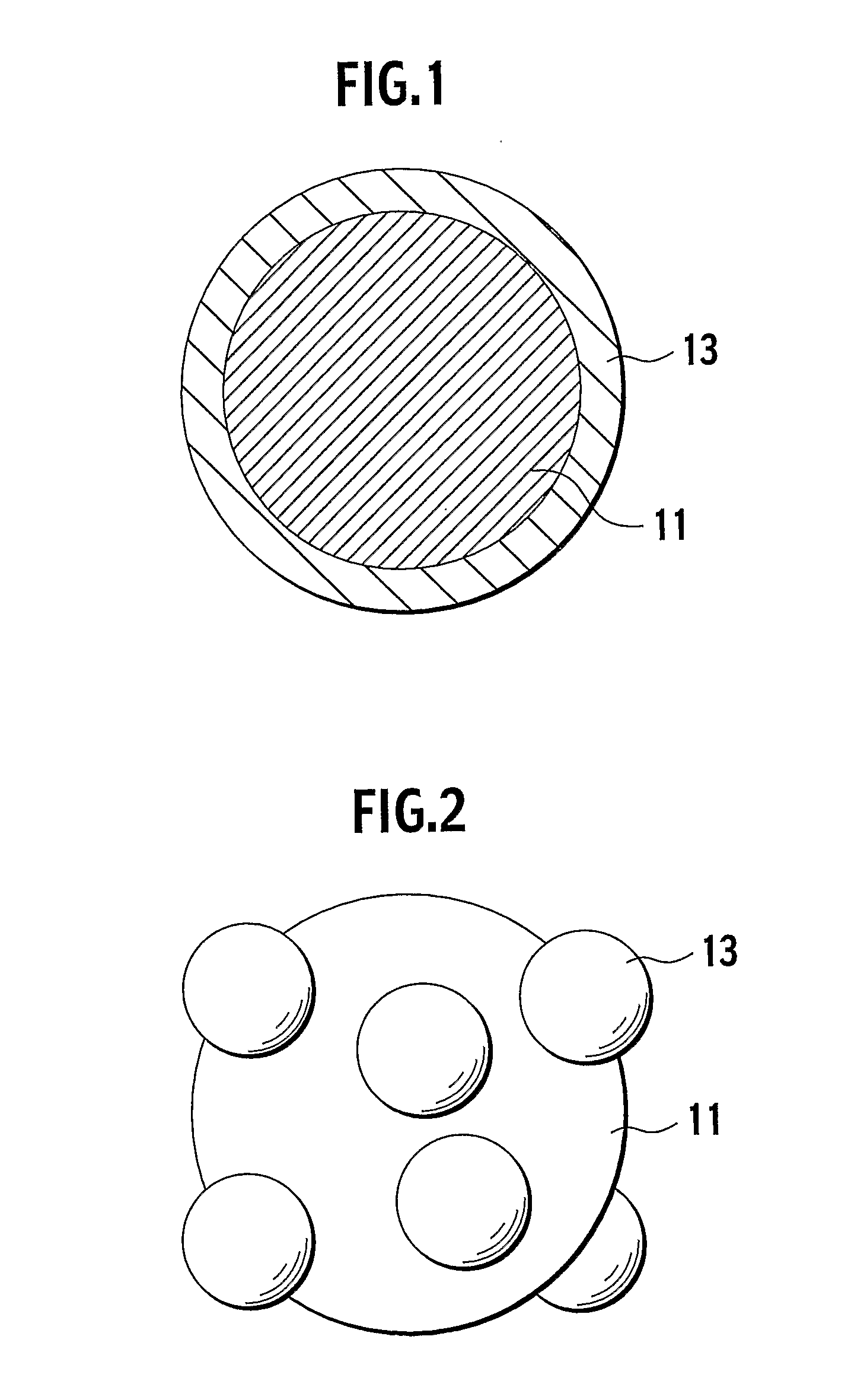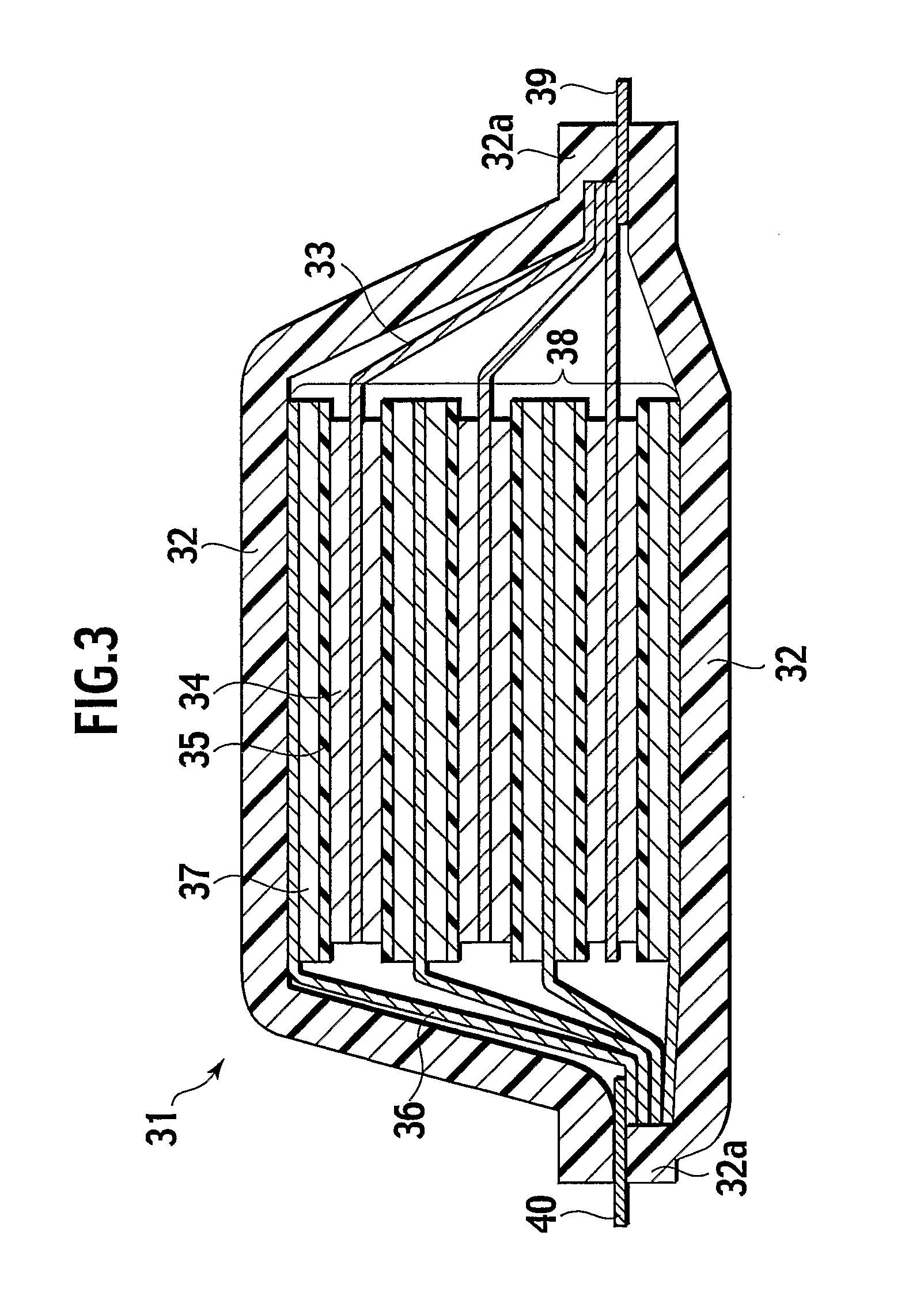Positive electrode material for non-aqueous electrolyte lithium ion battery and battery using the same
a technology of non-aqueous electrolyte lithium ion battery and positive electrode material, which is applied in the direction of secondary cell servicing/maintenance, cell components, sustainable manufacturing/processing, etc., can solve the problems of ineffective constitution and inability to effectively function, and achieve the effect of suppressing the decomposition of an electrolysis solution
- Summary
- Abstract
- Description
- Claims
- Application Information
AI Technical Summary
Benefits of technology
Problems solved by technology
Method used
Image
Examples
examples 1 to 42 , 85 , 86
EXAMPLES 1 TO 42, 85, 86, AND COMPARATIVE EXAMPLES 1 AND 2
[0116] 1. Fabrication of Positive Electrode
[0117] First, as shown in FIGS. 10 and 11, substances (Examples 1 to 42, 85, and 86) each including the Li compound with a thickness of 500 nm deposited and cover the surface of the Li—Ni oxide (mean particle diameter: 8 μm) and the Li—Ni oxide (Comparative Examples 1 to 2; no Li compound deposited) were fabricated. 75% by mass of the Li—Ni oxide, 10% by mass of acetylene black as the conductive material, 15% by mass of polyvinylidene fluoride were stirred with N-methyl-2-pyrrolidone added as a solvent to prepare a slurry. The slurry is applied on an aluminum foil (thickness: 20 μm) as the positive electrode collector with an applicator, and heated and dried at about 80° C. in a vacuum dryer. Subsequently, the electrodes with a diameter of 15 mm were stamped out from the aluminum foil and then dried at 90° C. under high vacuum for six hours. The thickness of the positive electrode a...
examples 43 to 84 , 87
EXAMPLES 43 TO 84, 87, AND 88 AND COMPARATIVE EXAMPLES 3 AND 4
[0124] First, as shown in FIGS. 12 and 13, substances (Examples 43 to 84, 87, and 88) each including the Li compound deposited to sprinkle on the surface of the Li—Ni oxide (mean particle diameter: 8 μm) so that the volume thereof was 1 with respect to the volume of the Li—Ni oxide of 100 were fabricated. Moreover, the Li—Ni oxide (mean particle diameter: 8 μm) (Comparative Examples 3 to 4; no Li compound deposited) were fabricated. Other than that, the positive and negative electrodes and the cells were fabricated and evaluated in a similar manner to Example 1. The obtained results are shown in FIGS. 12, 13.
[0125] From the results of FIGS. 10 to 13, it could be confirmed that the swell of the cells can be more suppressed in any case of Examples each including the substance as the positive electrode material in which the Li compound was deposited on the surface of the Li—Ni oxide than in Comparative Examples in each of w...
PUM
 Login to View More
Login to View More Abstract
Description
Claims
Application Information
 Login to View More
Login to View More - R&D
- Intellectual Property
- Life Sciences
- Materials
- Tech Scout
- Unparalleled Data Quality
- Higher Quality Content
- 60% Fewer Hallucinations
Browse by: Latest US Patents, China's latest patents, Technical Efficacy Thesaurus, Application Domain, Technology Topic, Popular Technical Reports.
© 2025 PatSnap. All rights reserved.Legal|Privacy policy|Modern Slavery Act Transparency Statement|Sitemap|About US| Contact US: help@patsnap.com



